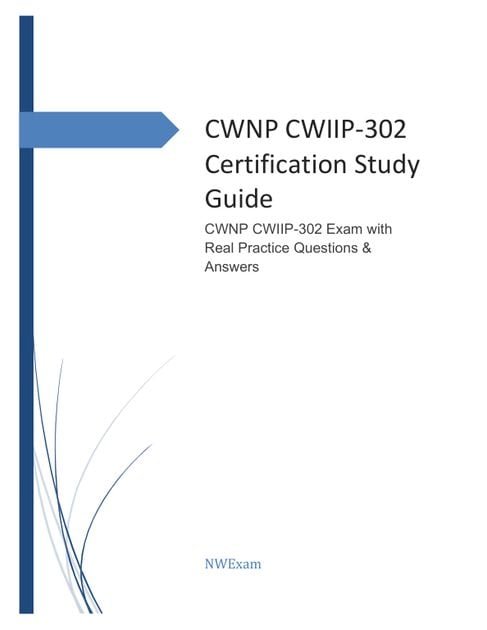Suggest an improvement
-
N/AFix spelling/grammar issueAdd or fix a linkAdd or fix an imageAdd more detailImprove the quality of the writingFix a factual error
-
You don’t need to tell us which article this feedback relates to, as we automatically capture that information for you.
-
This allows us to get in touch for more details if required.
-
Enter a five letter word in lowercase
#gform_wrapper_38 .gform_footer { visibility: hidden; position: absolute; left: -100vw; }
-
This field is for validation purposes and should be left unchanged.

/* = 0;if(!is_postback){return;}var form_content = jQuery(this).contents().find(‘#gform_wrapper_38’);var is_confirmation = jQuery(this).contents().find(‘#gform_confirmation_wrapper_38’).length > 0;var is_redirect = contents.indexOf(‘gformRedirect(){‘) >= 0;var is_form = form_content.length > 0 && ! is_redirect && ! is_confirmation;var mt = parseInt(jQuery(‘html’).css(‘margin-top’), 10) + parseInt(jQuery(‘body’).css(‘margin-top’), 10) + 100;if(is_form){jQuery(‘#gform_wrapper_38’).html(form_content.html());if(form_content.hasClass(‘gform_validation_error’)){jQuery(‘#gform_wrapper_38’).addClass(‘gform_validation_error’);} else {jQuery(‘#gform_wrapper_38’).removeClass(‘gform_validation_error’);}setTimeout( function() { /* delay the scroll by 50 milliseconds to fix a bug in chrome */ jQuery(document).scrollTop(jQuery(‘#gform_wrapper_38’).offset().top – mt); }, 50 );if(window[‘gformInitDatepicker’]) {gformInitDatepicker();}if(window[‘gformInitPriceFields’]) {gformInitPriceFields();}var current_page = jQuery(‘#gform_source_page_number_38’).val();gformInitSpinner( 38, ‘https://geekymedics.com/wp-content/plugins/gravityforms/images/spinner.svg’, true );jQuery(document).trigger(‘gform_page_loaded’, [38, current_page]);window[‘gf_submitting_38’] = false;}else if(!is_redirect){var confirmation_content = jQuery(this).contents().find(‘.GF_AJAX_POSTBACK’).html();if(!confirmation_content){confirmation_content = contents;}jQuery(‘#gform_wrapper_38’).replaceWith(confirmation_content);jQuery(document).scrollTop(jQuery(‘#gf_38’).offset().top – mt);jQuery(document).trigger(‘gform_confirmation_loaded’, [38]);window[‘gf_submitting_38’] = false;wp.a11y.speak(jQuery(‘#gform_confirmation_message_38’).text());}else{jQuery(‘#gform_38’).append(contents);if(window[‘gformRedirect’]) {gformRedirect();}}jQuery(document).trigger(“gform_pre_post_render”, [{ formId: “38”, currentPage: “current_page”, abort: function() { this.preventDefault(); } }]); if (event && event.defaultPrevented) { return; } const gformWrapperDiv = document.getElementById( “gform_wrapper_38” ); if ( gformWrapperDiv ) { const visibilitySpan = document.createElement( “span” ); visibilitySpan.id = “gform_visibility_test_38”; gformWrapperDiv.insertAdjacentElement( “afterend”, visibilitySpan ); } const visibilityTestDiv = document.getElementById( “gform_visibility_test_38” ); let postRenderFired = false; function triggerPostRender() { if ( postRenderFired ) { return; } postRenderFired = true; gform.core.triggerPostRenderEvents( 38, current_page ); if ( visibilityTestDiv ) { visibilityTestDiv.parentNode.removeChild( visibilityTestDiv ); } } function debounce( func, wait, immediate ) { var timeout; return function() { var context = this, args = arguments; var later = function() { timeout = null; if ( !immediate ) func.apply( context, args ); }; var callNow = immediate && !timeout; clearTimeout( timeout ); timeout = setTimeout( later, wait ); if ( callNow ) func.apply( context, args ); }; } const debouncedTriggerPostRender = debounce( function() { triggerPostRender(); }, 200 ); if ( visibilityTestDiv && visibilityTestDiv.offsetParent === null ) { const observer = new MutationObserver( ( mutations ) => { mutations.forEach( ( mutation ) => { if ( mutation.type === ‘attributes’ && visibilityTestDiv.offsetParent !== null ) { debouncedTriggerPostRender(); observer.disconnect(); } }); }); observer.observe( document.body, { attributes: true, childList: false, subtree: true, attributeFilter: [ ‘style’, ‘class’ ], }); } else { triggerPostRender(); } } );} );
/* ]]> */

Introduction
Uterine fibroids (leiomyomas) are benign smooth muscle tumours arising in the myometrium of the uterus. They are the most common benign uterine tumours in women of reproductive age, with around 70% of women developing at least one fibroid by the age of 50 years old.1 Fibroids are more prevalent in women of African, Afro-Caribbean and Asian descent.
Fibroids vary in size and are made of whorled smooth muscle cells as well as fibrous and connective tissue. Their growth is predominantly oestrogen-dependent, typically regressing after menopause.
Aetiology
The exact cause of uterine fibroids is not completely understood. However, studies suggest that genetic mutations in uterine smooth muscle cells and hormonal changes in oestrogen levels stimulate abnormal growth.2
Types of fibroids
Fibroids are divided into the following types:3
- Intramural: most common type of fibroid, located within the myometrium (middle muscle layer of the uterus)
- Subserosal: located beneath the serosa (the outer surface of the uterus); larger fibroids can extend outward, distorting the abdominal cavity
- Submucosal: located beneath the endometrium and protrude into the uterine cavity; associated with a higher risk of bleeding
- Pedunculated: attached to the uterus by a stalk-like structure called a peduncle; these can be submucosal, subserosal and cervical
- Cervical: originating from the cervix and are less common compared to other types


Fibroids can also be described in terms of location. The FIGO classification system for uterine leiomyomas helps to classify fibroids, categorising them into eight distinct types. This system provides a more detailed and specific analysis, aiding in the diagnosis and treatment of the fibroid.2, 4
Risk factors
Risk factors for uterine fibroids include:
- Increasing age: risk increases with age until menopause. After menopause, women with fibroids may experience a reduction in the size of the fibroid as oestrogen levels decrease.
- Early menarche: high lifetime exposure to oestrogen
- Ethnicity: women of Black and Asian descent are more likely to develop fibroids; they tend to occur at a younger age, grow larger and are more likely to be symptomatic
- Family history: especially if a first-degree relative is affected
- Nulliparity: due to prolonged exposure to oestrogen
- Obesity: adipose tissue aids the conversion of androgen to oestrogen using the enzyme aromatase
- Diabetes: insulin resistance can promote androgen production as well as insulin-like growth factors, which can promote fibroid growth
- Hypertension: high blood pressure can damage blood vessels, leading to inflammation, smooth muscle cell injury and abnormal tissue growth, potentially contributing to fibroid growth1
Clinical features
Most women with fibroids are asymptomatic, and fibroids are often discovered incidentally during an abdominal examination, pelvic examination or during pregnancy.
History
Symptoms often correlate with the size and location of the fibroid.
Typical symptoms of uterine fibroids include:
- Menorrhagia: most common presentation as fibroids stimulate blood vessel growth, thicken the uterine lining and prevent adequate uterine contraction during menstruation, which can interfere with normal uterine shedding, leading to more blood loss
- Abdominal pain and discomfort: acute or chronic, with acute pain from fibroid degradation, torsion of a pedunculated fibroid or prolapse through the cervix
- Abdominal distension
- Pressure symptoms: larger fibroids can press on surrounding structures such as the bladder, leading to urinary frequency, urgency, retention or nocturia. Posterior fibroids can press on the rectum, causing constipation, tenesmus, and dyschezia.
- Dyspareunia: pain during sex can occur if fibroids press on or extend through the cervix
Other important areas to cover in the history include:
- Menstrual history (e.g. date of last menstrual period)
- Impact of symptoms on daily life and quality of living
Clinical examination
In the context of suspected uterine fibroids, a thorough abdominal and pelvic examination is necessary.
Typical clinical findings include:
- Firm, enlarged non-tender uterine mass
- Anaemia: chronic heavy bleeding can lead to iron deficiency anaemia
- Subfertility/infertility: large fibroids can obstruct the fallopian tubes, preventing sperm from entering. Submucosal fibroids can interfere with the implantation of the embryo onto the uterine lining.
Differential diagnosis
Differential diagnoses to consider in the context of uterine fibroids include:
- Endometriosis
- Adenomyosis
- Ovarian cysts
- Ovarian tumours
- Pregnancy
- Endometrial cancer
Investigations
Bedside investigations
Relevant bedside investigations include:
- Urine pregnancy test: in all women of reproductive age to exclude pregnancy
Laboratory investigations
Relevant laboratory investigations include:
- Full blood count: may show anaemia, especially with menorrhagia
- Iron studies: ferritin may be low if iron deficient
Imaging
Relevant imaging includes:
- Abdominal or transvaginal ultrasound: first line in diagnosing uterine fibroids
- MRI pelvis: if ultrasound is inconclusive or if surgery is planned in order to map the fibroids
- Hysteroscopy: to examine the endometrial cavity, obtain biopsies, and identify or remove submucosal fibroids. A minimally invasive procedure, but carries risks, including injury to surrounding structures such as the bowel or bladder, bleeding and infection.
Management
If patients are asymptomatic, no routine treatment or follow-up is necessary and they should be advised to return if symptoms arise.
Medical management
Menorrhagia
If menorrhagia is present, the fibroid is <3 cm in diameter, and there is no distortion of the uterine cavity NICE recommends:
- Levonorgestrel intrauterine system (Mirena coil): first line
- Combined oral contraception pill or oral progestogens if the Mirena coil is declined or unsuitable
- Tranexamic acid or NSAIDs: if non-hormonal treatments are preferred5
If the fibroid is >3 cm, consider specialist referral to gynaecology for additional investigations and management:
- Tranexamic acid and or NSAIDs should be offered if pharmacological treatment is needed whilst awaiting referral
Fibroids
Specialist medical management is indicated if fibroids are >3 cm or symptomatic management is unsuccessful, and includes:
- Ryeqo® (relugolix with estradiol and norethisterone acetate): relugolix, a GnRH antagonist, reduces the secretion of FSH and LH, resulting in decreased circulating oestrogen
- Goserelin (Zoladex®) and leuprorelin acetate (Prostap®): GnRH agonists that initially stimulate, then suppress the pituitary-gonadal axis, leading to a more profound reduction in oestrogen levels and inducing medical menopause. Add-back hormone therapy if often required to mitigate menopausal side effects and prevent bone loss.
Non-surgical procedures
Indicated if medical management is unsuccessful and includes:
- Endometrial ablation: involves a heated wire loop, heated fluid within a balloon or laser to remove a layer of endometrium to manage menorrhagia
- Uterine artery embolisation (UAE): recommended for larger fibroids, where blood supply to the fibroids is destroyed, causing them to shrink6
- Radiofrequency ablation: a newer procedure that uses heat to shrink the fibroid
Surgical procedures
Indicated for severe symptoms where medical management is ineffective, and includes:
- Myomectomy: surgical removal of the fibroid whilst preserving the uterus, via an open or laparoscopic approach. Although it is effective, there is a possibility of recurrence.
- Hysteroscopic trans-cervical resection of fibroids (TCRF): minimally invasive technique using a hysteroscope to visually guide the removal of the fibroid
- Hysteroscopic morcellation: removes fibroid tissue by cutting it into smaller pieces, allowing for easier removal during hysteroscopic surgery
- Hysterectomy: total or subtotal removal of the uterus for those with severe symptoms or large fibroids
Psychological support
Fibroids can significantly affect a woman’s life, not only physically, but also mentally and emotionally. It is important to assess how their symptoms impact quality of life, including relationships, work, and hobbies. Understanding this helps tailor an individualised management plan and refer patients to appropriate teams or support services.
The British Fibroid Trust is a patient support group that provides reliable information about fibroids, as well as a supportive community and services for women affected by fibroids.
Complications
Complications of uterine fibroids may include:
- Iron deficiency anaemia
- Recurrent UTIs, incontinence, urinary retention and hydronephrosis if left untreated: from bladder compression
- Chronic constipation: from bowel compression
- Torsion of the fibroid: more common with pedunculated fibroids
- Sub/infertility
- Pregnancy-related complications
- Malignant change: a rare complication of fibroids, but should be considered if fibroids demonstrate significant growth over a short period of time, particularly after menopause
Complications during pregnancy
As uterine fibroids are hormone-dependent, they tend to increase in size during pregnancy. Larger fibroids can lead to obstruction of the vaginal canal which can delay labour or result in complete obstruction requiring caesarean section. There is also an increased risk of postpartum haemorrhage as fibroids prevent the uterus from contracting after delivery.
Fibroids also increase the risk of miscarriage and preterm labour due to distortion of the uterine cavity.
Red degeneration of the fibroids is caused by ischaemia that occurs when a large fibroid outgrows its blood supply. It can occur often during the second or third trimester of pregnancy. It can cause acute pain, typically due to the rapid growth of fibroids and disrupted blood flow.
Reviewer
Ms Rhonda Flemming
Obstetrics and Gynaecology Consultant
Editor
Dr Jamie Scriven
References
- NICE CKS. Fibroids. 2023. Available from: [LINK].
- BMJ Best Practice. Uterine fibroids. 2024. Available from: [LINK].
- British Fibroid Trust. Fibroids: Causes – Types – Symptoms. 2021. Available from: [LINK].
- Munro MG, Critchley HOD, Broder MS, et al. FIGO classification system (PALM-COEIN) for causes of abnormal uterine bleeding in nongravid women of reproductive age. International Journal of Obstetrics and Gynaecology. 2011. Available from: [LINK].
- NICE CKS. Menorrhagia. 2024. Available from: [LINK].
- Royal College of Obstetricians & Gynaecologists. Uterine Artery Embolisation in the Management of Fibroids. 2013. Available from: [LINK].
Image references
- Figure 1. Mikael Häggström, from original by Anja Hirschelmann and Rudy Leon De Wilde. Fibroid locations. License: [CC BY 4.0].
Discover more from Bibliobazar Digi Books
Subscribe to get the latest posts sent to your email.




